The grim reality and metaphorical weight of imprisonment have long echoed in the chambers of music history. From the outlaw country grit of Johnny Cash to the socio-political anthems of Public Enemy, the specter of incarceration has served as both a haunting fear and a potent muse for countless artists. These musicians, often observing from outside prison walls, have crafted compelling narratives exploring physical confinement, societal constraints, and the yearning for freedom.
Fortunately, for those of us on the outside, music offers a powerful lens to understand the experience of being behind bars, whether literally or figuratively. Just as television shows like Orange Is the New Black and films such as The Shawshank Redemption bring the prison experience to our screens, these Songs About Imprisonment offer an auditory journey into the complex emotions and stories associated with confinement. From the rebellious energy of “Jailhouse Rock” to the desperate plea of “Jailbreak,” here are 20 essential songs that delve into the multifaceted world of imprisonment.
Johnny Cash, “Folsom Prison Blues”
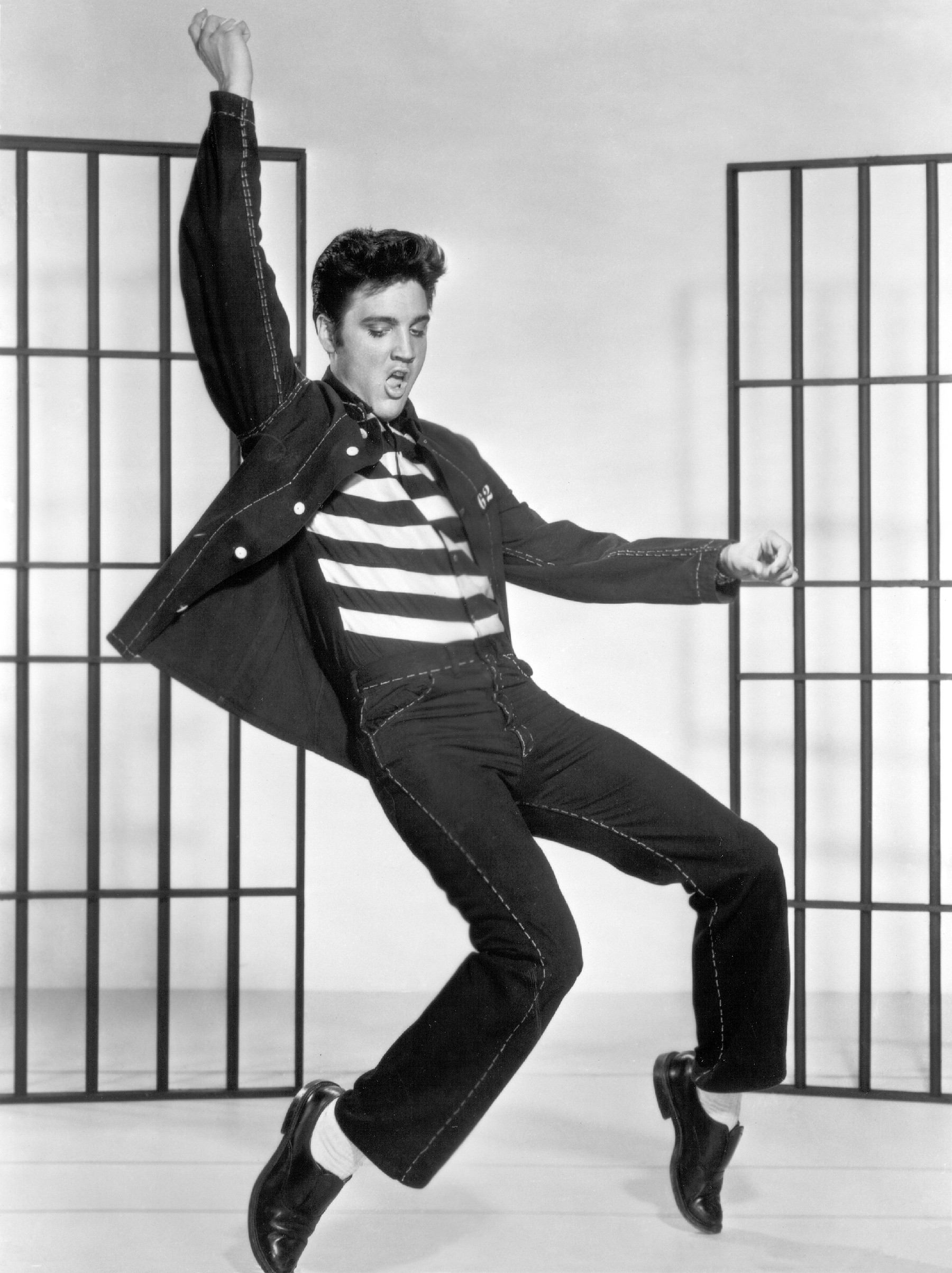 Johnny Cash performing Folsom Prison Blues, a defining song about prison life.
Johnny Cash performing Folsom Prison Blues, a defining song about prison life.
It’s a remarkable feat that a man who primarily knew jail from brief overnight stays penned what is arguably the most iconic and authentic-sounding prison song ever recorded. Johnny Cash, the “Man in Black,” became a champion for the incarcerated, famously performing free concerts for inmates, including his legendary performance at Folsom Prison in California. “Folsom Prison Blues,” along with other jail-themed tracks like “Starkville City Jail” and “San Quentin,” cemented Cash’s legacy as the voice of the imprisoned. Nearly six decades later, “Folsom Prison Blues” remains the gold standard, the quintessential “best prison song” that continues to resonate with audiences worldwide. Its raw honesty and vivid imagery capture the desolation and longing associated with prison life.
Bob Dylan, “Hurricane”
 Bob Dylan singing Hurricane, a protest song about wrongful imprisonment.
Bob Dylan singing Hurricane, a protest song about wrongful imprisonment.
Bob Dylan’s “Hurricane,” from his 1976 album Desire, is a powerful and poignant ballad recounting the tragic true story of boxer Rubin “Hurricane” Carter. The song serves as a protest against racial injustice, highlighting Carter’s wrongful conviction for a triple homicide in 1966. Despite flimsy evidence linking Carter and his friend to the crime, a prejudiced jury delivered a guilty verdict. Dylan’s impassioned lyrics directly address the police misconduct and systemic bias in the case. While the song became an anthem for Carter’s cause, galvanizing public support for a retrial, he was devastatingly convicted again in 1976. Ultimately, justice prevailed, and Carter was finally released from prison nearly a decade later, proving the enduring power of music in shedding light on injustice and fighting for freedom.
Elvis Presley, “Jailhouse Rock”
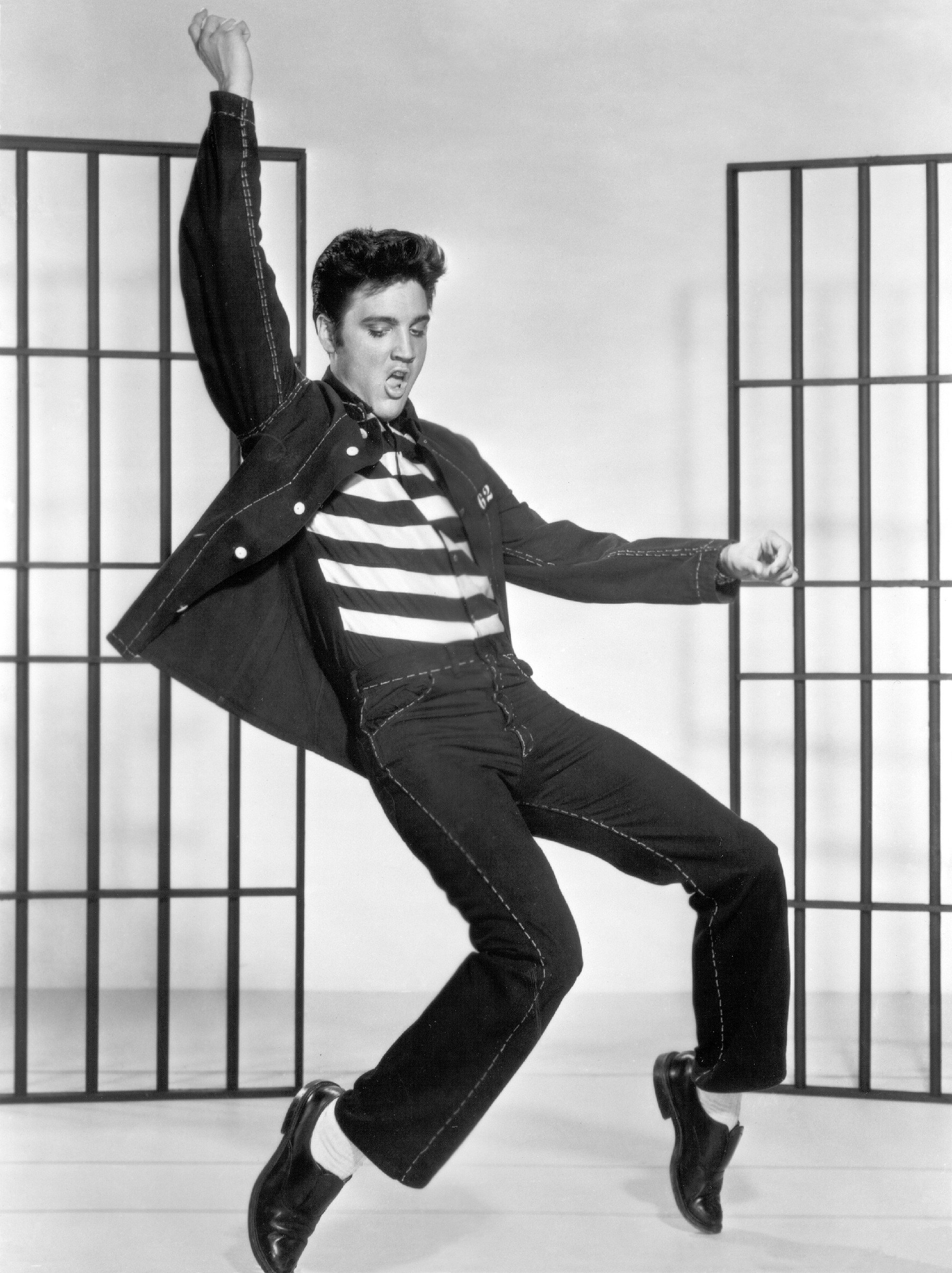 Elvis Presley performing Jailhouse Rock, a high-energy song from the movie of the same name.
Elvis Presley performing Jailhouse Rock, a high-energy song from the movie of the same name.
Perhaps the most undeniably upbeat and energetic song about prison ever conceived, “Jailhouse Rock” is a Leiber and Stoller masterpiece. Composed to accompany Presley’s 1957 film Jailhouse Rock, the song tells the story of a young man who discovers his musical talent while incarcerated. This rock and roll classic, recognized as one of Rolling Stone’s 500 Greatest Songs of All Time, transcends the grim realities of prison life with its infectious rhythm and celebratory spirit. “Jailhouse Rock” has been covered by a diverse range of artists, from Jeff Beck to John Mellencamp, and even featured in the Blues Brothers’ movie, performed at Joliet Prison, underscoring its enduring appeal and cultural impact as a quintessential song about jail.
The Clash, “Jail Guitar Doors”
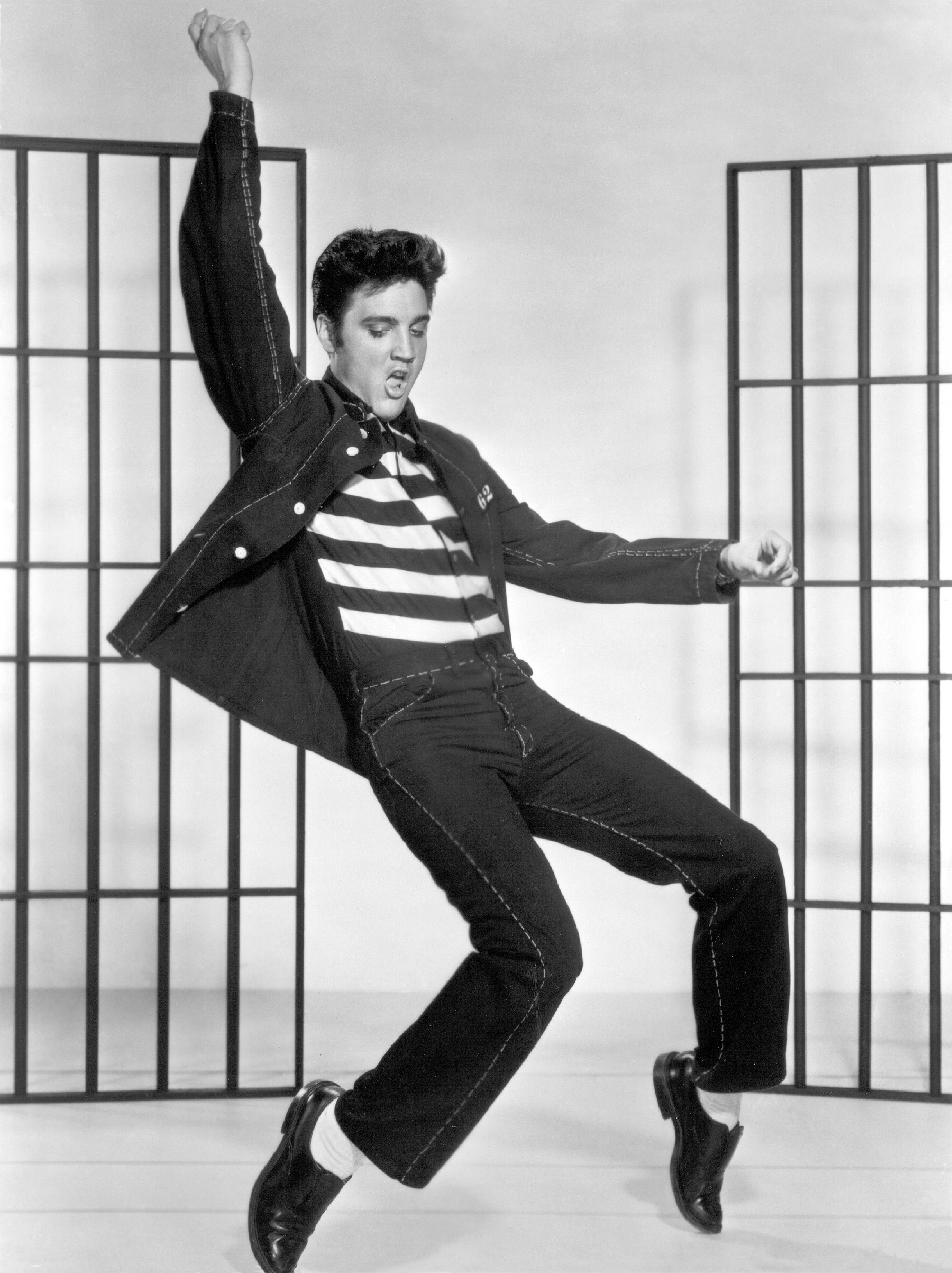 The Clash, creators of Jail Guitar Doors, a song referencing musicians' legal troubles.
The Clash, creators of Jail Guitar Doors, a song referencing musicians' legal troubles.
Released as the B-side to their 1977 single “Clash City Rockers,” “Jail Guitar Doors” is a Joe Strummer-penned track offering a subtle nod to rock musicians who have faced legal troubles. The song name-drops Wayne Kramer of MC5, Peter Green from Fleetwood Mac, and Keith Richards of The Rolling Stones, all of whom had run-ins with the law. Beyond the individual references, “Jail Guitar Doors” speaks to the broader theme of creative spirits clashing with authority and the consequences that can follow. Wayne Kramer later partnered with Billy Bragg to establish the Jail Guitar Doors initiative, a testament to the song’s lasting impact, which provides musical instruments to incarcerated individuals, offering a path to rehabilitation and self-expression within prison walls.
Warren Zevon, “Prison Grove”
 Warren Zevon singing Prison Grove, a song written during his battle with cancer, adding depth to its themes of confinement.
Warren Zevon singing Prison Grove, a song written during his battle with cancer, adding depth to its themes of confinement.
Released in 2003, “Prison Grove” is a stark and haunting depiction of confinement from the perspective of an inmate in a harsh, unforgiving prison. Zevon paints a bleak picture of iron and rock walls, devoid of heat in the dead of winter, conveying a sense of physical and emotional desolation. Adding a profound layer of depth, “Prison Grove” was recorded while Zevon was battling terminal lung cancer. This context imbues the song with an inescapable sense of mortality and a feeling of being trapped by fate itself, a prison from which there is no escape. The addition of background vocals by Bruce Springsteen and T-Bone Burnett further amplifies the song’s somber and weighty atmosphere.
Tom Waits, “Fish in the Jailhouse”
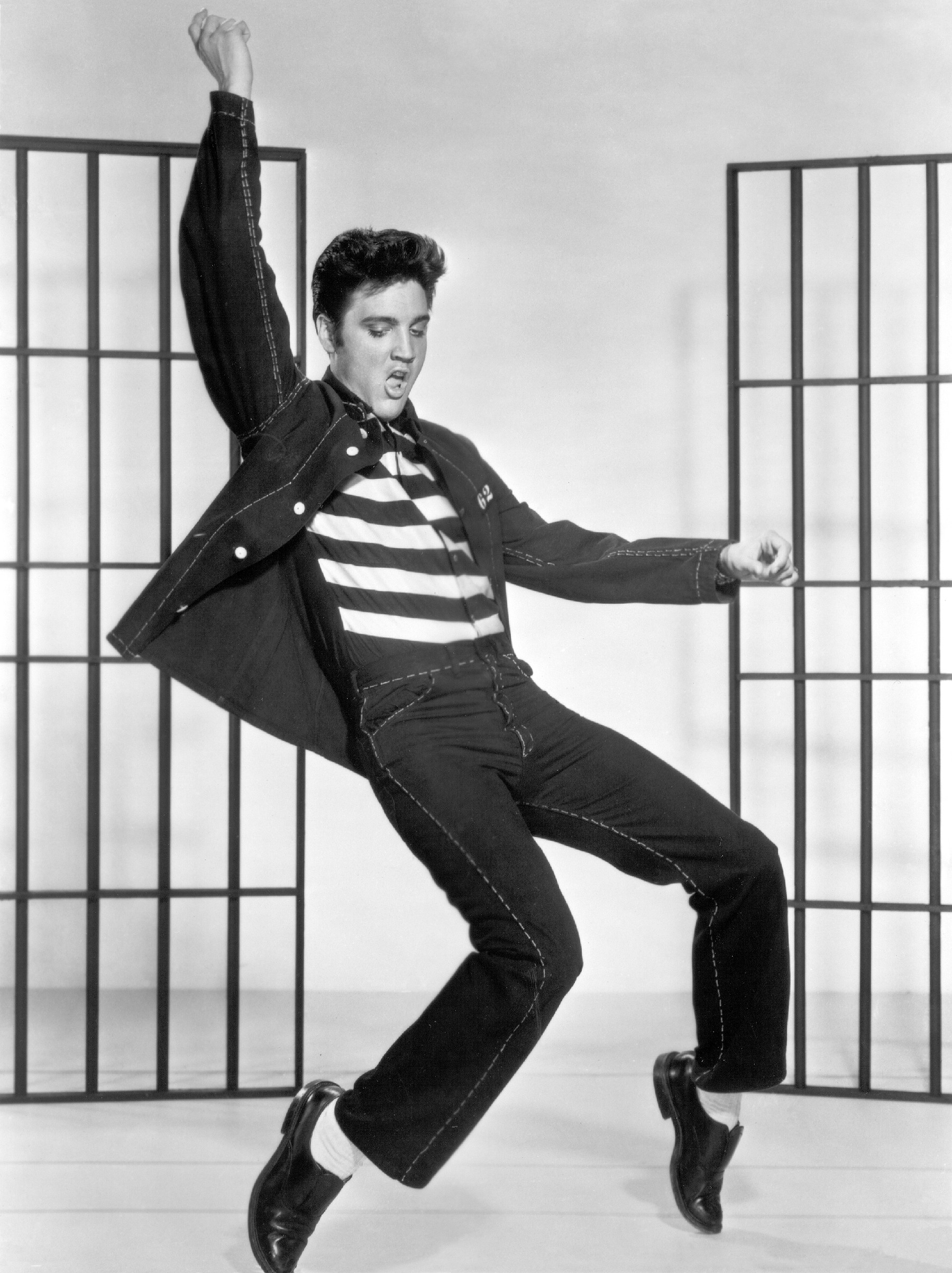 Tom Waits performing Fish in the Jailhouse, a song with a whimsical take on prison escape.
Tom Waits performing Fish in the Jailhouse, a song with a whimsical take on prison escape.
While “fish” in prison slang often refers to a naive newcomer facing a harsh awakening, Tom Waits’ “Fish in the Jailhouse” takes a more literal and whimsical approach to the term. The song introduces us to Peoria Johnson, a character who confidently proclaims his ability to escape any prison using a “skeleton fish key.” This unusual key, he explains to his cellmate, will be procured from the night’s supper, as the jailhouse cafeteria is serving fish. The quirky concept for the song reportedly originated from a dream experienced by Waits’ wife and co-writer, Kathleen Brennan. “Fish in the Jailhouse” showcases Waits’ signature storytelling style, blending dark humor and surreal imagery to explore the theme of prison escape in an unconventional and memorable way.
Sublime, “Jailhouse”
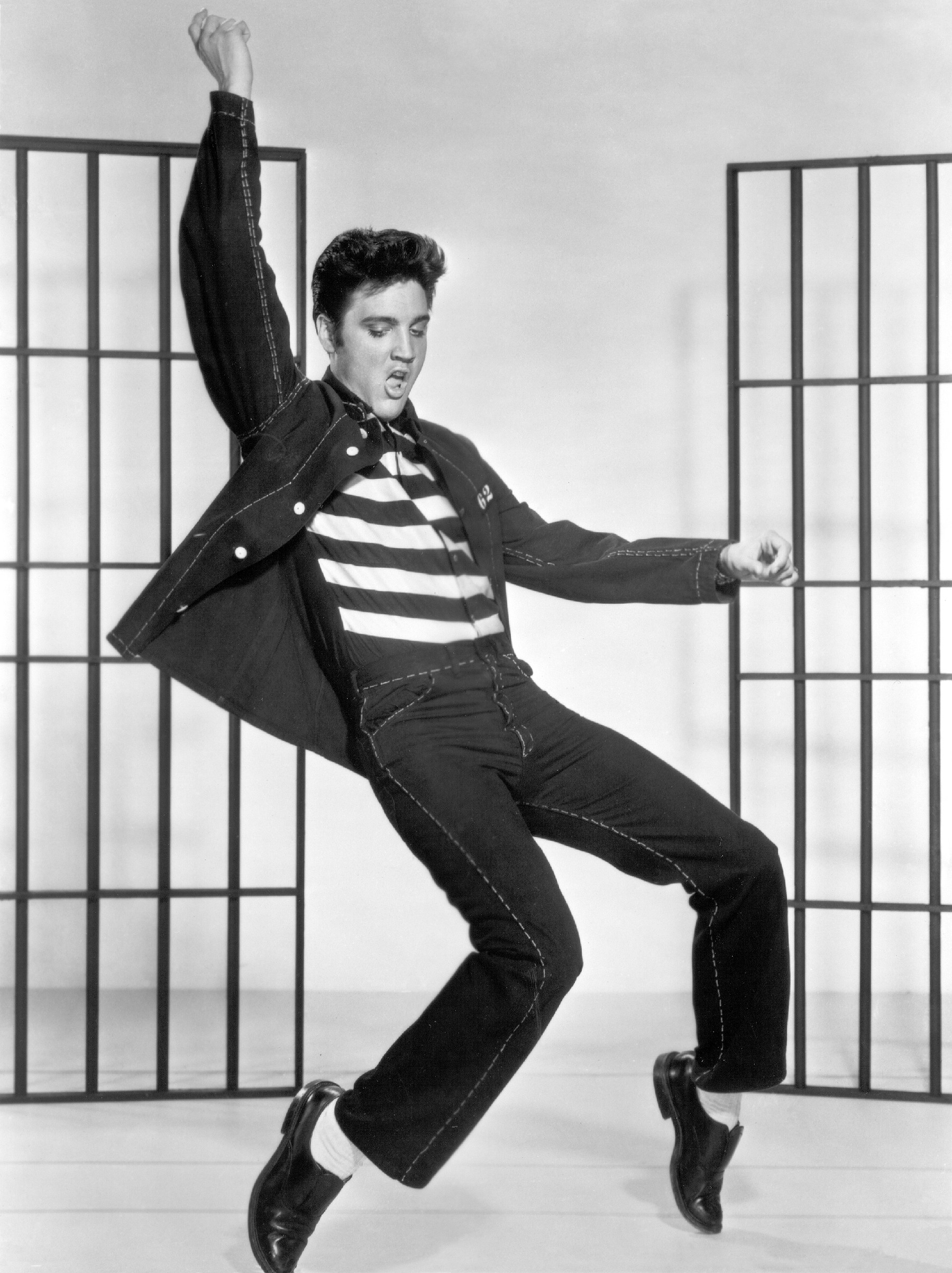 Sublime, known for their cover of Jailhouse, blending reggae and punk influences in their music.
Sublime, known for their cover of Jailhouse, blending reggae and punk influences in their music.
For their major label debut, Sublime put their unique spin on an early Bob Marley & The Wailers single, also titled “Jailhouse.” Sublime’s rendition masterfully combines Marley’s original verses with their own interpretation of Tenor Saw’s “Roll Call,” resulting in a distinctive reggae-punk fusion. The track, featured on their self-titled album Sublime, becomes a compelling narrative about the perpetual conflict between youthful rebellion and the constraints of the law. Sublime’s “Jailhouse” captures the angst and defiance of teenage years while placing it within the context of confinement and societal expectations.
Soundgarden, “Rusty Cage”
 Soundgarden, artists behind Rusty Cage, a song about metaphorical imprisonment and breaking free.
Soundgarden, artists behind Rusty Cage, a song about metaphorical imprisonment and breaking free.
“Rusty Cage,” a powerful track from Soundgarden’s 1992 album Badmotorfinger, transcends the literal prison setting to explore the concept of metaphorical imprisonment. The song delves into feelings of captivity, restriction, and the intense yearning for liberation. Lyrics like “Cutting my teeth on bars and rusty chains. I’m gonna break my rusty cage and run,” powerfully convey this desperation to escape confining circumstances. The song’s potent themes of confinement and freedom resonated deeply with Johnny Cash, who recorded his own acclaimed cover version in 1996, further solidifying “Rusty Cage” as a powerful anthem about breaking free from limitations, both physical and metaphorical.
Suicidal Tendencies, “Institutionalized”
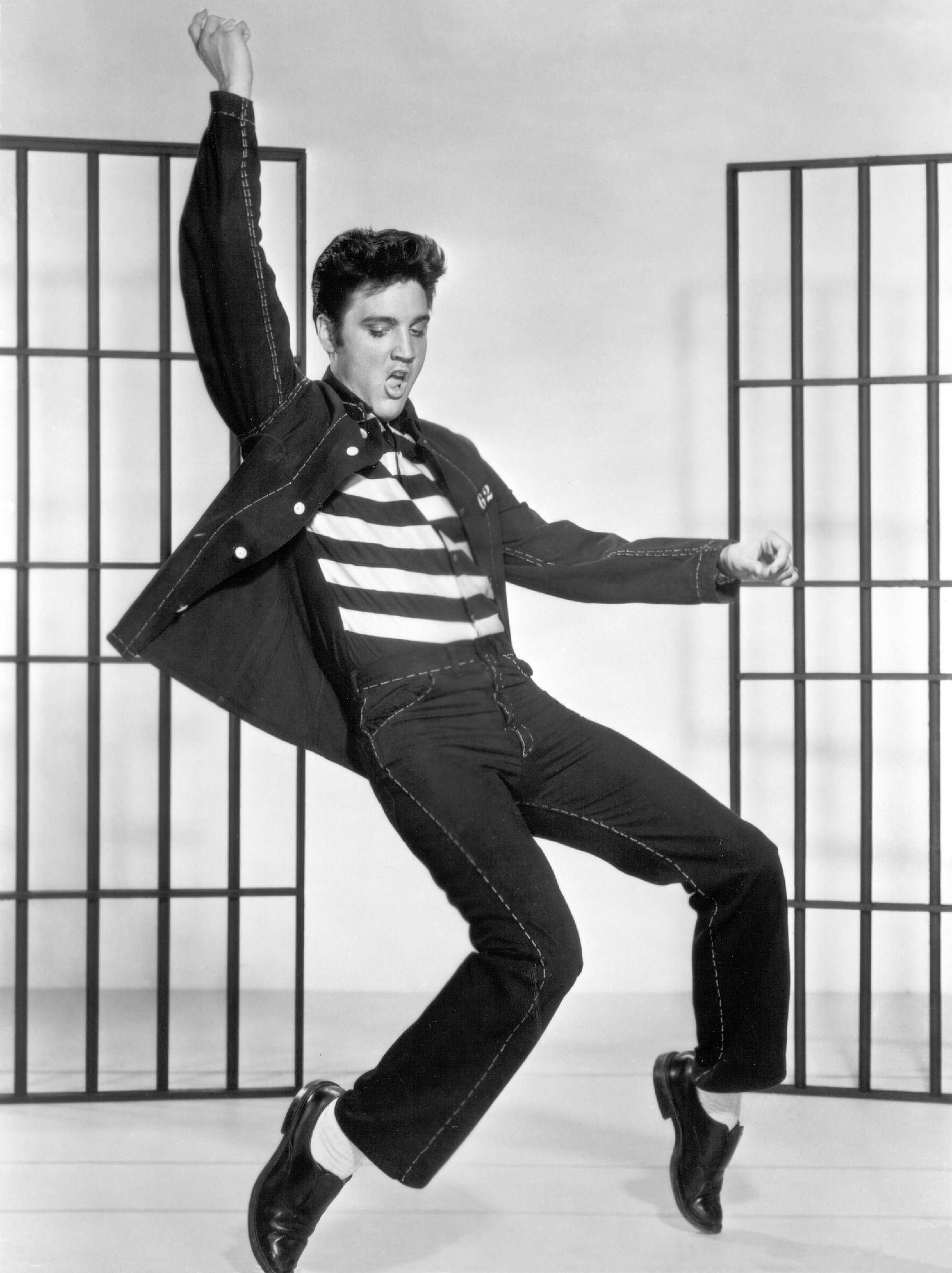 Suicidal Tendencies performing Institutionalized, a song about mental institution as a form of imprisonment.
Suicidal Tendencies performing Institutionalized, a song about mental institution as a form of imprisonment.
This 1983 track from the Los Angeles punk band Suicidal Tendencies, fronted by Mike Muir, shifts the focus of imprisonment from physical jail to the confines of a mental health facility. “Institutionalized” narrates the story of a protagonist fearing the transformative effects of mental institution treatment. The lyrics express concern that medications and lobotomies will strip him of his identity, turning him into a shadow of his former self – a “zombie.” The song poignantly portrays the fear of losing oneself within the system, drawing a parallel between the dehumanizing aspects of mental institutions and traditional prisons. Famously punctuated by the line “All I wanted was a Pepsi,” the song highlights the protagonist’s sense of alienation and misunderstanding.
Black Flag, “Police Story”
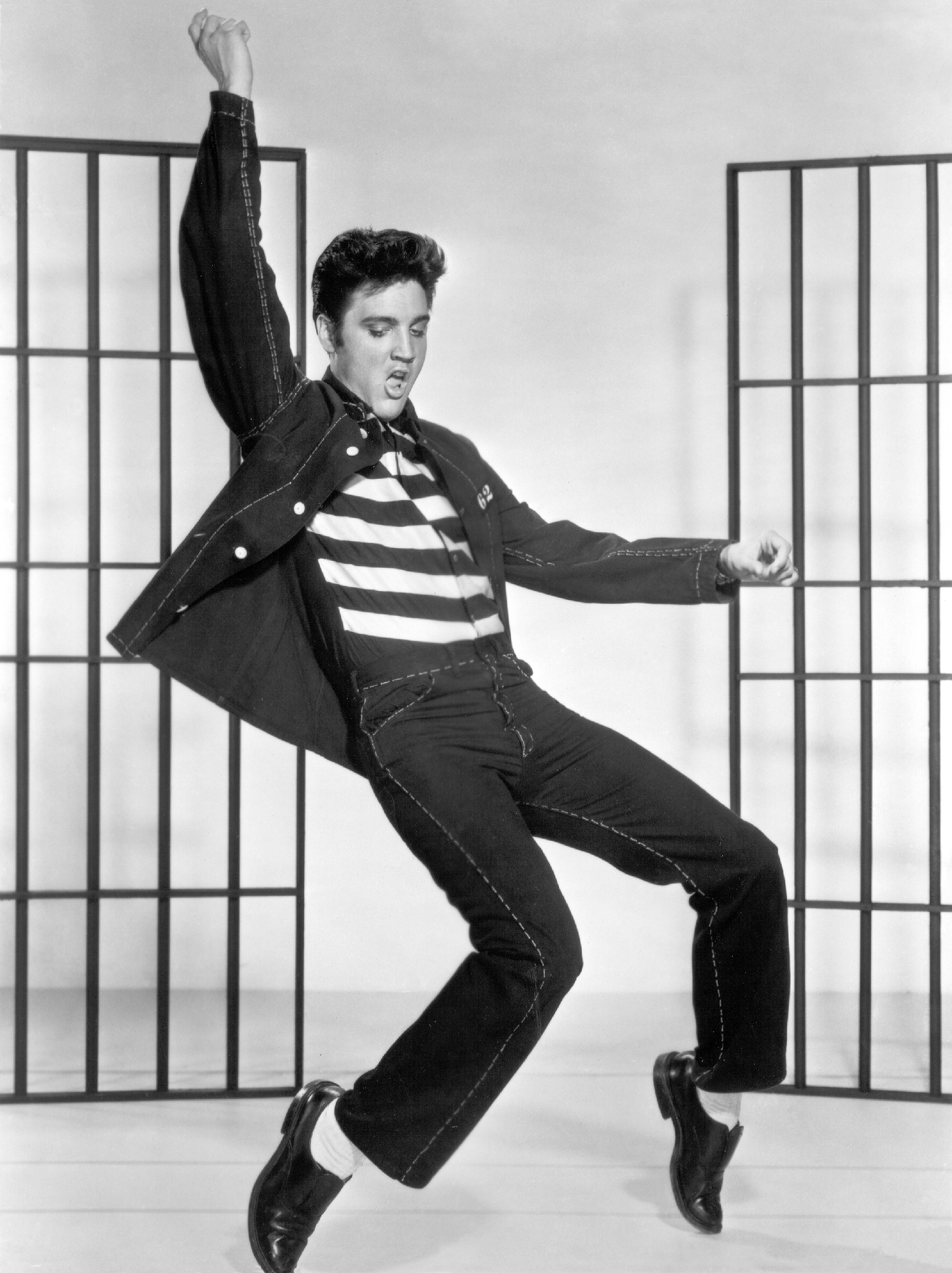 Black Flag performing Police Story, a short, explosive song about police harassment and injustice.
Black Flag performing Police Story, a short, explosive song about police harassment and injustice.
Clocking in at just over 90 seconds, Black Flag’s “Police Story” is a raw and explosive sonic burst of frustration. Penned by Greg Ginn in 1981, the song directly addresses police discrimination and harassment targeting the Los Angeles hardcore punk scene. Henry Rollins’s frustrated vocals snarl lines like, “I go to court for my crime. Stand in line, pay bail. I may serve time,” encapsulating the band’s anger and defiance. Appearing on their seminal album Damaged, “Police Story” bridges the gap between minor acts of rebellion, as depicted in their song “Spray Paint (The Walls),” and the more serious consequences of imprisonment explored in “Padded Cell,” showcasing the spectrum of interactions between punk subculture and law enforcement.
Nas, “One Love”
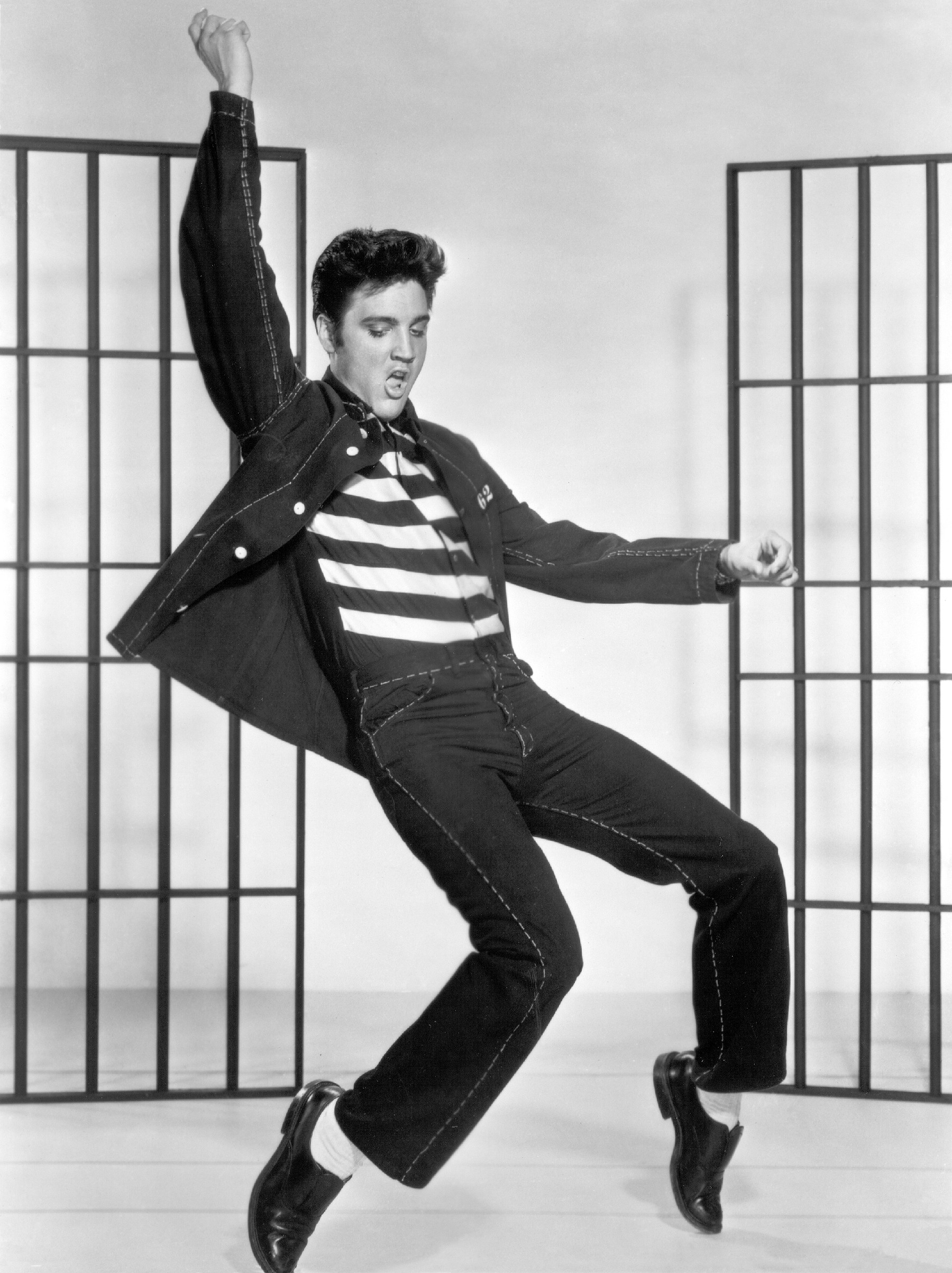 Nas in a pensive mood, artist of One Love, a song in the form of a letter to an incarcerated friend.
Nas in a pensive mood, artist of One Love, a song in the form of a letter to an incarcerated friend.
“One Love,” a standout track from Nas’s critically acclaimed debut album Illmatic, takes the form of a letter written to a friend serving time in prison. The song provides an intimate glimpse into the lives of those affected by incarceration, both inside and outside the walls. Nas updates his friend on happenings in their Queensbridge neighborhood, sharing both good and bad news. In one poignant verse, he congratulates his friend on the birth of his child while simultaneously delivering the painful news of his partner’s infidelity. Despite the harsh realities he conveys, Nas’s gesture of leaving “half a hundred in the prisoner’s commissary” offers a touch of humanity and support, highlighting the bonds of loyalty and friendship that endure even across prison bars.
Snoop Dogg, “Murder Was The Case”
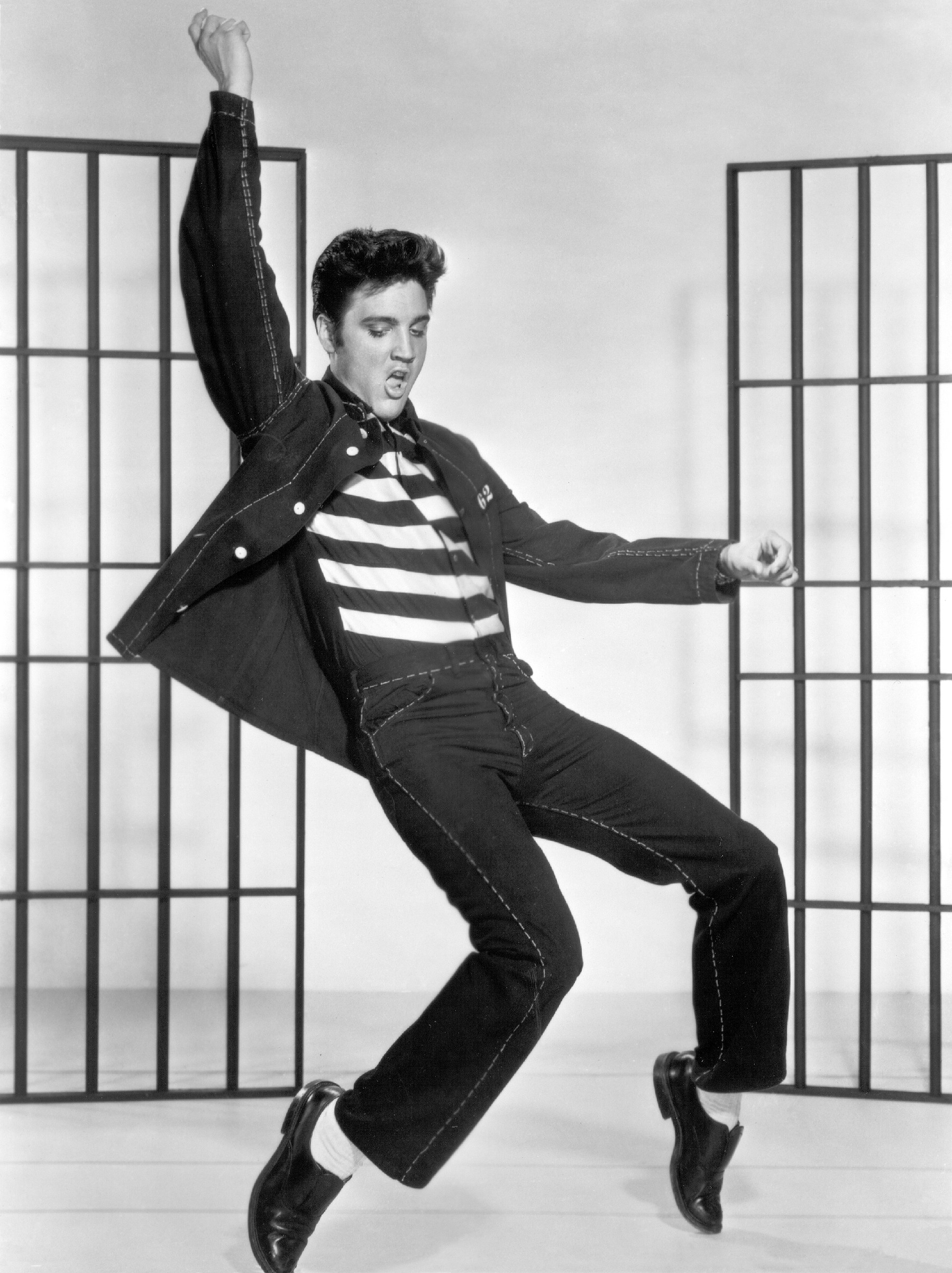 Snoop Dogg, creator of Murder Was The Case, a gangsta rap epic depicting a journey to prison.
Snoop Dogg, creator of Murder Was The Case, a gangsta rap epic depicting a journey to prison.
Often hailed as the “November Rain” of gangsta rap, Snoop Dogg’s “Murder Was The Case” is an epic and cinematic hip-hop narrative. Produced by Dr. Dre, the song follows Snoop’s persona on a journey from the streets of Long Beach, California, to the California Institution for Men in Chino. The sprawling narrative encompasses drive-by shootings, death and resurrection, deals with the Devil, drug use, biblical references, and ultimately, a ride to prison amidst a violent “shank war.” In 1994, the song was accompanied by an equally ambitious 18-minute short film, further solidifying its status as a landmark in hip-hop storytelling and visual artistry, vividly depicting the harsh realities of gang life and its potential consequences.
Sam Cooke, “Chain Gang”
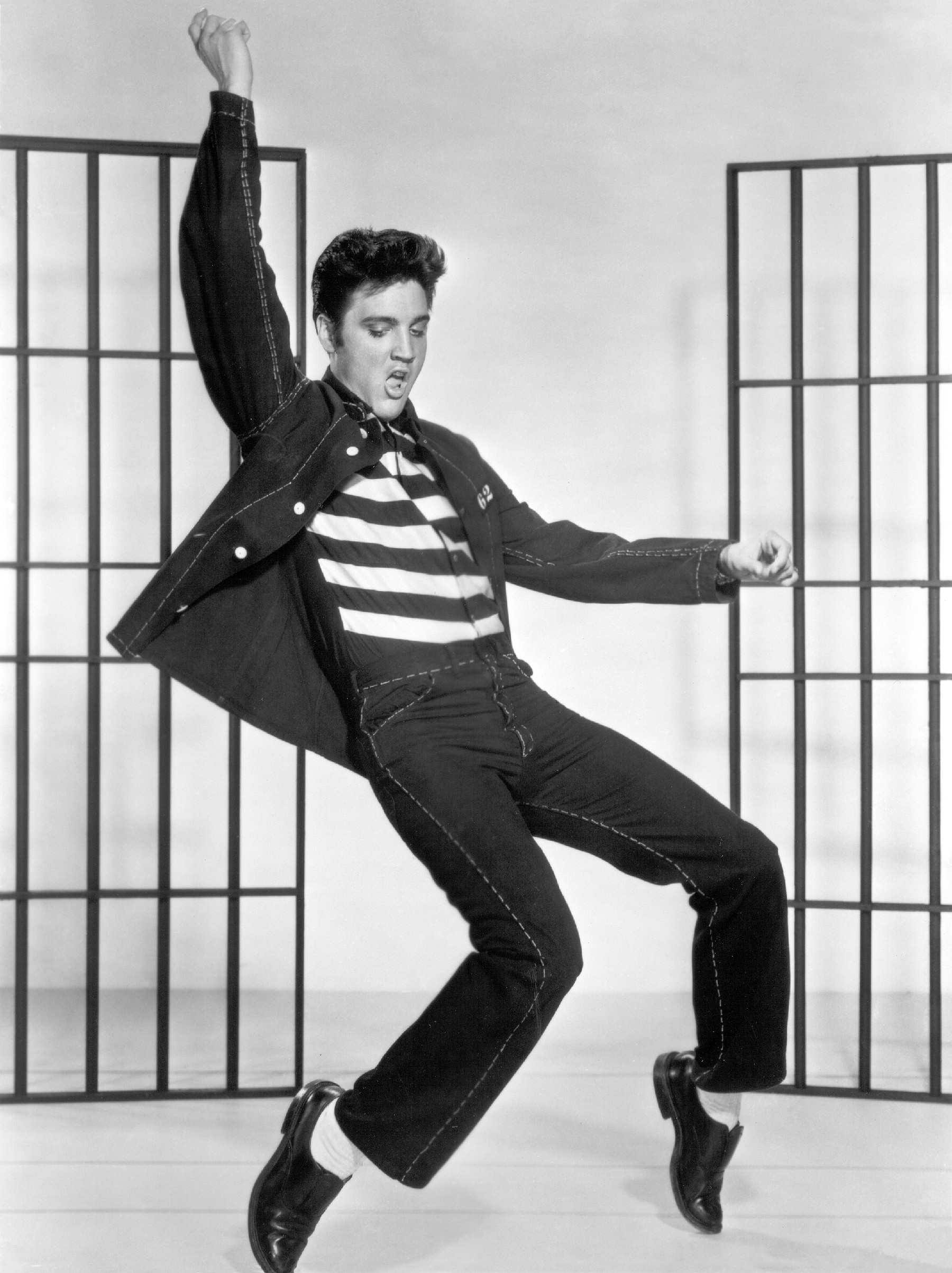 Sam Cooke performing Chain Gang, inspired by witnessing a real prison chain gang.
Sam Cooke performing Chain Gang, inspired by witnessing a real prison chain gang.
Sam Cooke’s upbeat 1960 hit “Chain Gang” carries a deeper social commentary beneath its catchy rhythm. The song was directly inspired by Cooke’s encounter with a real prison chain gang while on tour. During this era, prison labor was frequently used to construct public infrastructure, including highways, serving as a source of cheap labor. Despite the grueling and dehumanizing conditions of chain gangs, Cooke’s song emphasizes the enduring human spirit and the hope for eventual freedom as the driving force keeping the prisoners going. The song’s upbeat tempo juxtaposed with its subject matter creates a powerful and thought-provoking listening experience.
Thin Lizzy, “Jailbreak”
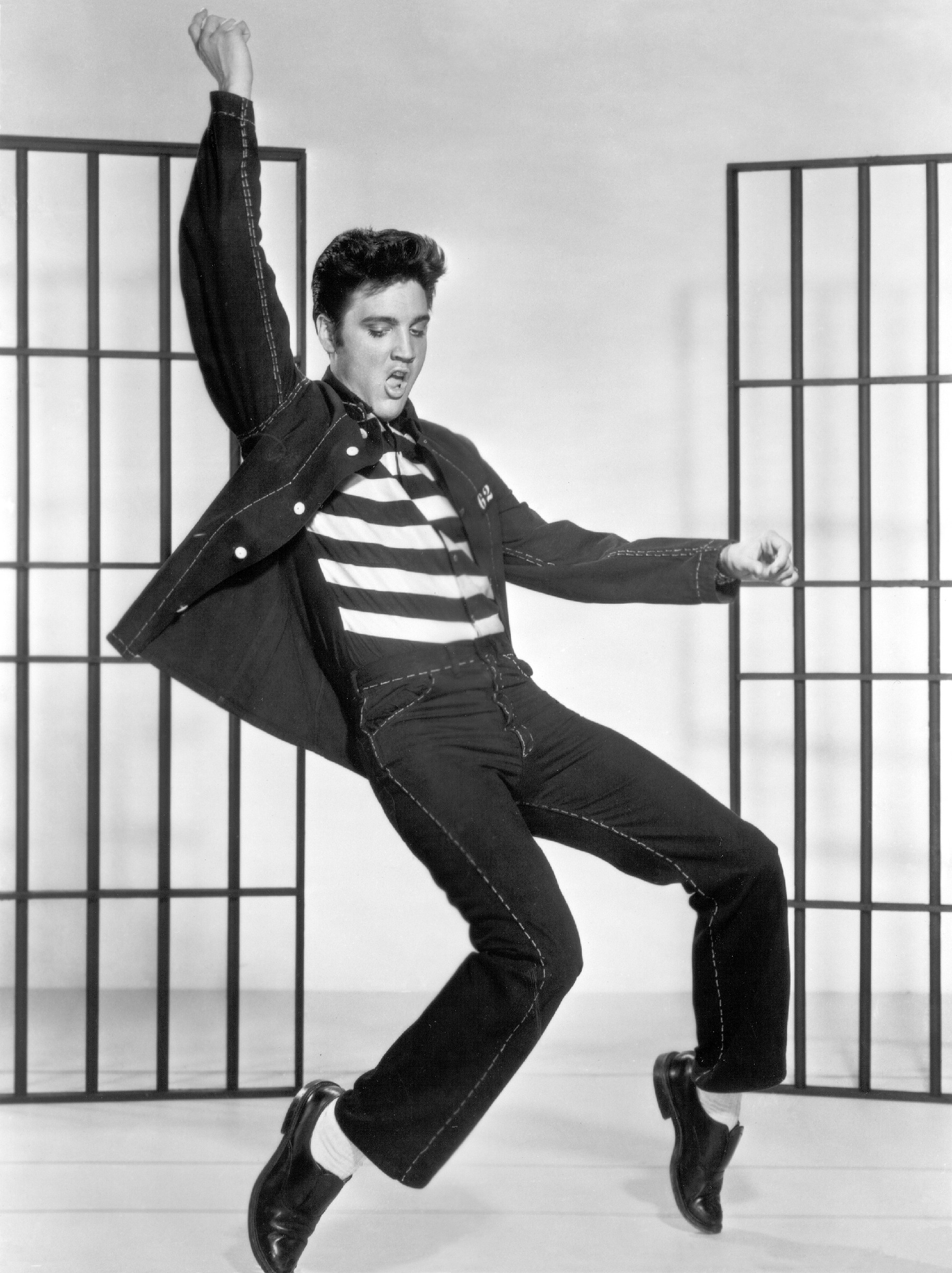 Thin Lizzy performing Jailbreak, an anthemic rock song about escaping from prison and seeking freedom.
Thin Lizzy performing Jailbreak, an anthemic rock song about escaping from prison and seeking freedom.
Thin Lizzy’s anthemic “Jailbreak” is a straightforward and electrifying rock song whose title leaves little to the imagination. The lyrics vividly depict a daring prison escape, complete with pursuing hound dogs and glaring searchlights. Once the escapees reach the city, their priorities shift immediately to seeking out female companionship, highlighting a primal urge for freedom and pleasure after confinement. “Jailbreak” is a high-energy celebration of liberation and escape, capturing the thrill and adrenaline of breaking free from constraints.
James Brown & The Famous Flames, “Prisoner of Love”
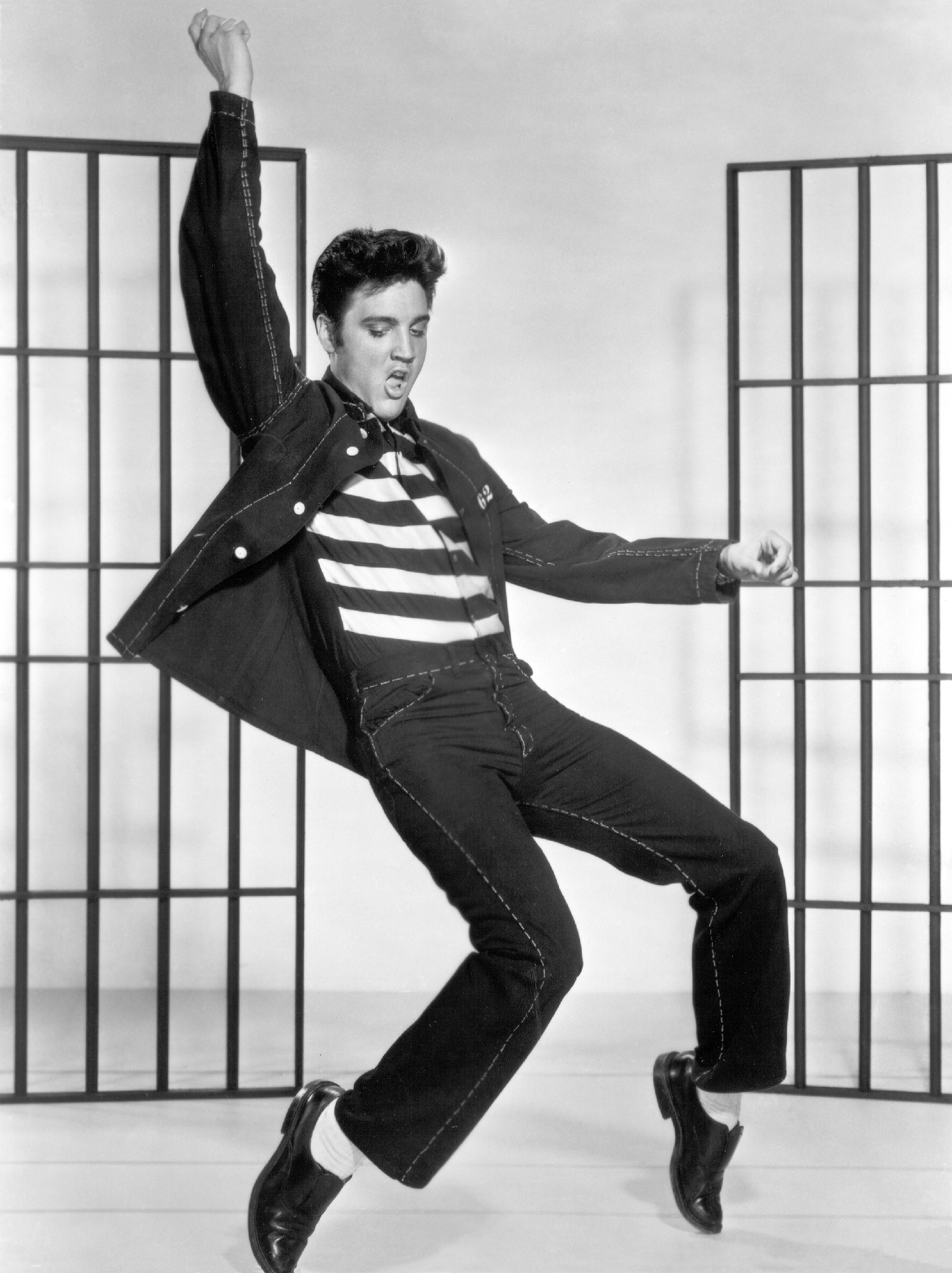 James Brown performing Prisoner of Love, a soulful rendition of a song about being metaphorically imprisoned by love.
James Brown performing Prisoner of Love, a soulful rendition of a song about being metaphorically imprisoned by love.
“Prisoner of Love,” while not literally about jail, uses the metaphor of imprisonment to explore the complexities of romantic commitment. Originally written in 1931, the song became a hit for various artists, including Russ Columbo and Perry Como. However, James Brown’s 1963 rendition with The Famous Flames is widely considered the definitive version. Brown’s soulful and passionate delivery transforms the song into a powerful declaration of being willingly “imprisoned” by love. In this context, “prisoner” takes on a bittersweet meaning, suggesting both the joy and potential limitations inherent in deep romantic relationships.
Public Enemy, “Black Steel in the Hour of Chaos”
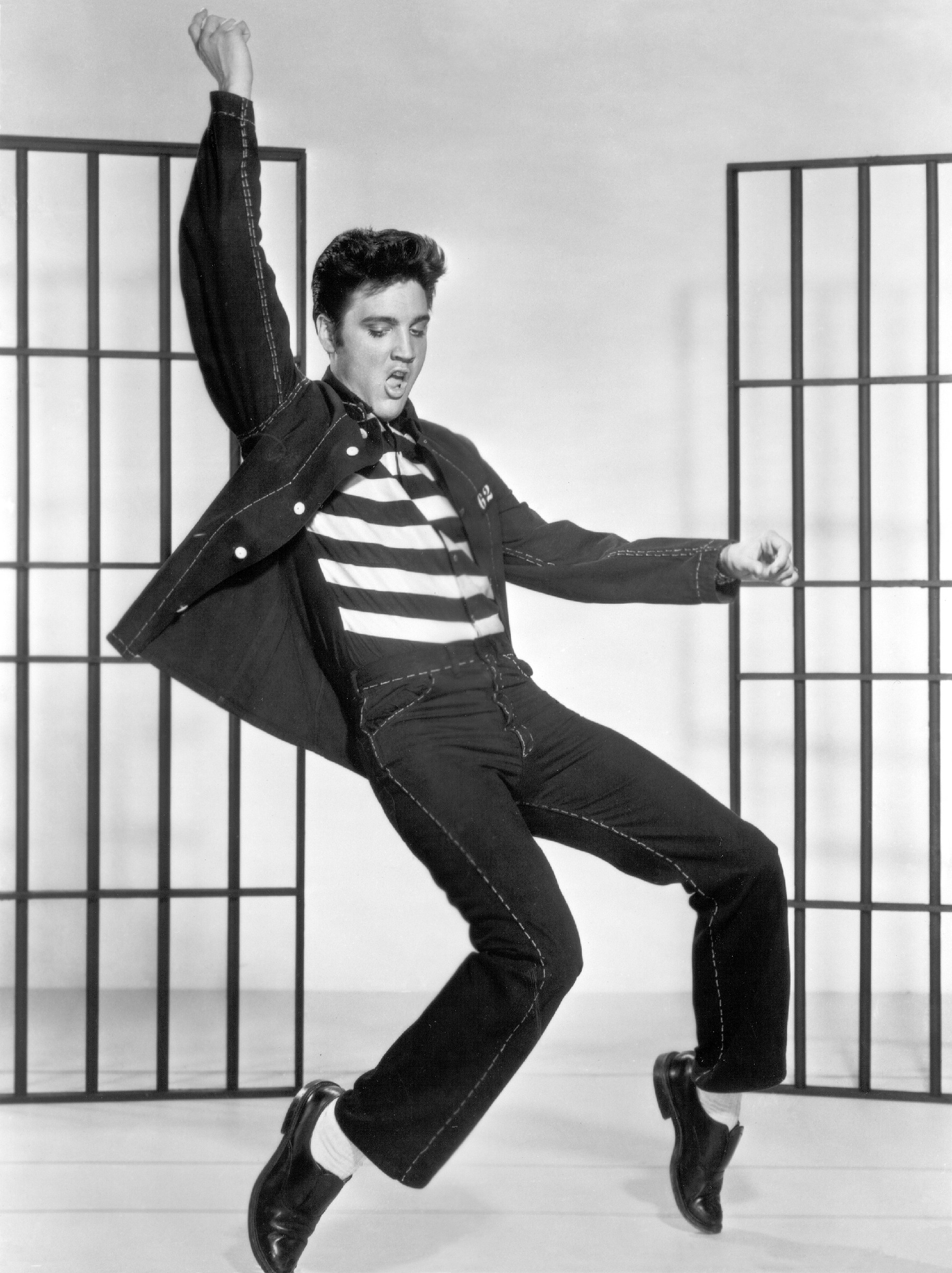 Public Enemy, artists behind Black Steel in the Hour of Chaos, a song about draft dodging and a prison break.
Public Enemy, artists behind Black Steel in the Hour of Chaos, a song about draft dodging and a prison break.
Public Enemy’s “Black Steel in the Hour of Chaos” is a detailed and politically charged narrative centered around draft dodging and a large-scale prison break. The song’s protagonist, a draft dodger, is apprehended and incarcerated. The story unfolds with a correctional officer falling asleep, creating an opportunity for escape. The protagonist seizes the officer’s “black steel” (gun), and a chaotic prison break ensues, leaving a trail of violence and mayhem in its wake. “Black Steel in the Hour of Chaos” uses the prison break scenario as a metaphor for resisting oppressive systems and fighting for freedom against societal constraints, typical of Public Enemy’s politically conscious and revolutionary themes.
Nate Dogg feat. Snoop Dogg, “Never Leave Me Alone”
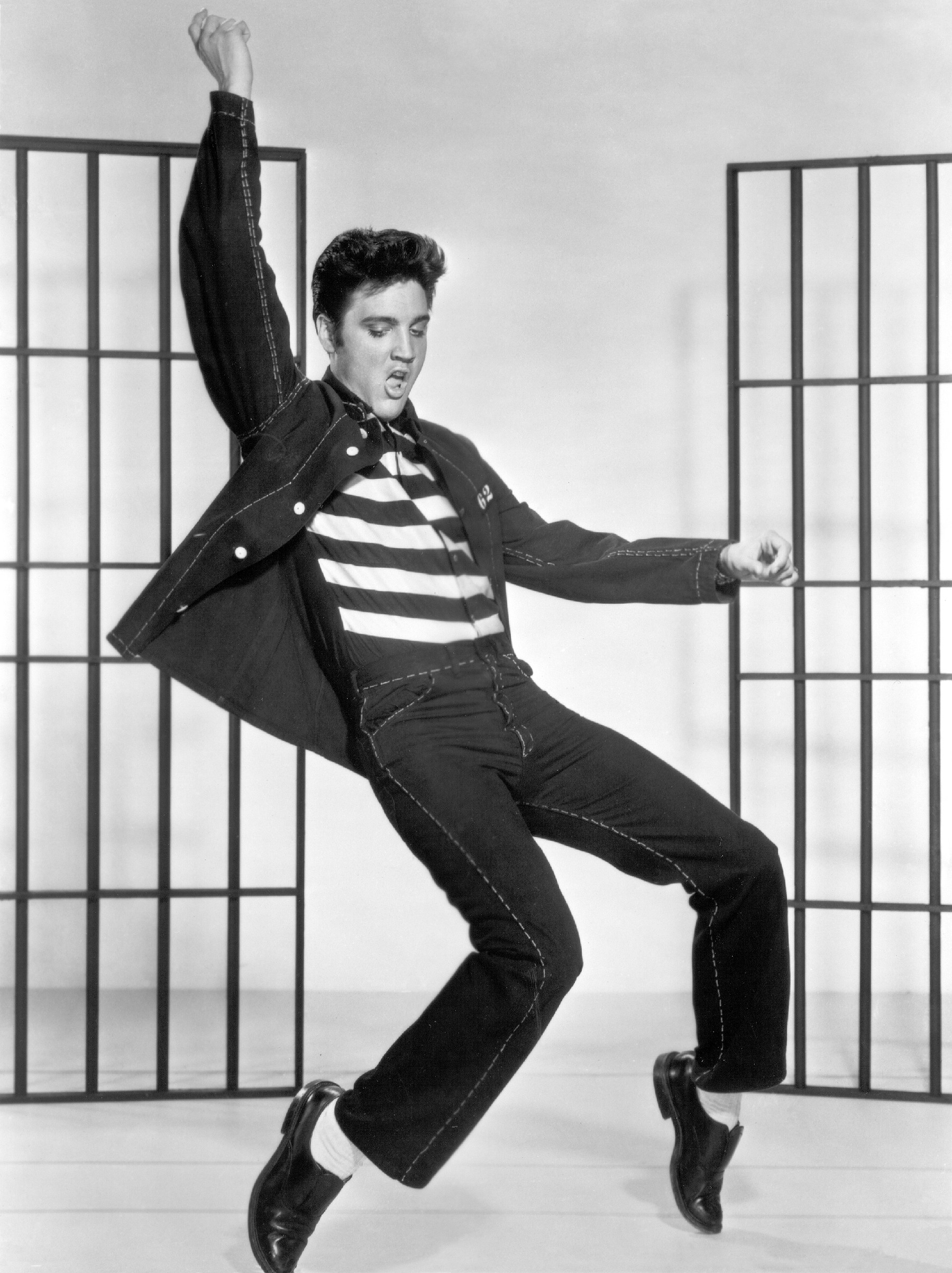 Nate Dogg and Snoop Dogg collaborating on Never Leave Me Alone, featuring a verse from a prisoner's perspective.
Nate Dogg and Snoop Dogg collaborating on Never Leave Me Alone, featuring a verse from a prisoner's perspective.
Nate Dogg’s 1998 G-Funk ballad, “Never Leave Me Alone,” explores the duality of a life torn between love and crime. Within this song, Snoop Dogg delivers a verse offering a poignant perspective from inside prison walls. Snoop’s lyrics depict a sense of betrayal (“Somebody was naughty when they snitched on me”) and the harsh reality of a lengthy sentence (“the judge just sentenced me to do about a century”). He also expresses anxieties about his partner’s faithfulness on the outside, adding a personal and vulnerable dimension to the prison experience, highlighting the emotional toll of incarceration on relationships and personal lives.
Skip Spence, “Weighted Down”
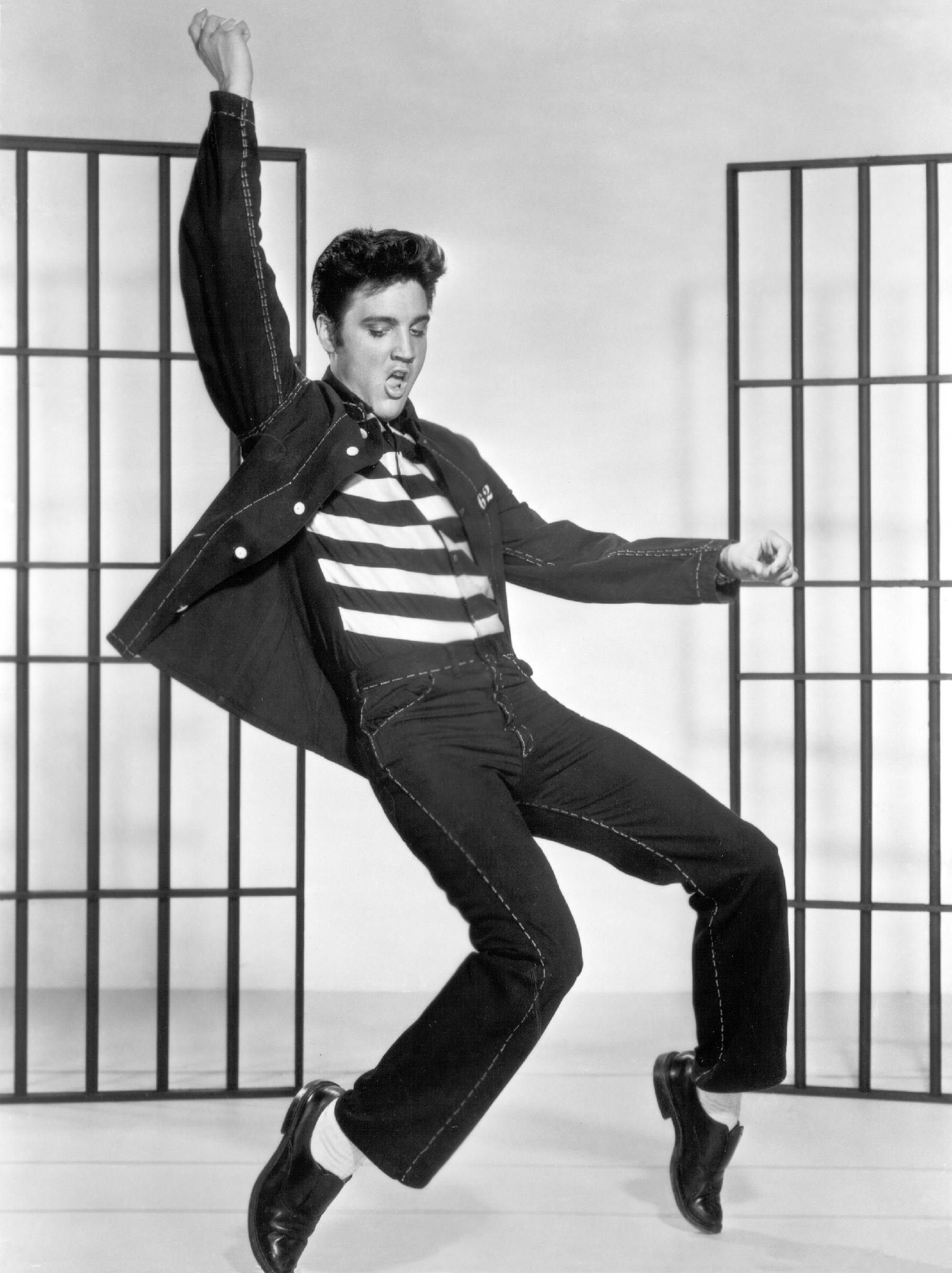 Skip Spence, artist of Weighted Down, a deeply personal song written during his confinement in mental institutions.
Skip Spence, artist of Weighted Down, a deeply personal song written during his confinement in mental institutions.
Skip Spence, a musician with stints in both Jefferson Airplane and Moby Grape, faced a tragic derailment of his promising career due to schizophrenia. In 1968, during the peak of his success, Spence experienced a breakdown in New York City, leading to confinement in mental institutions such as Bellevue and the Tombs. It was within these institutions that Spence penned the songs that would comprise his only solo album, the psychedelic classic Oar. “Weighted Down (The Prison Song)” directly reflects his experiences during this period of confinement, offering a deeply personal and raw glimpse into the internal and external prisons he faced.
Merle Haggard, “Life in Prison”
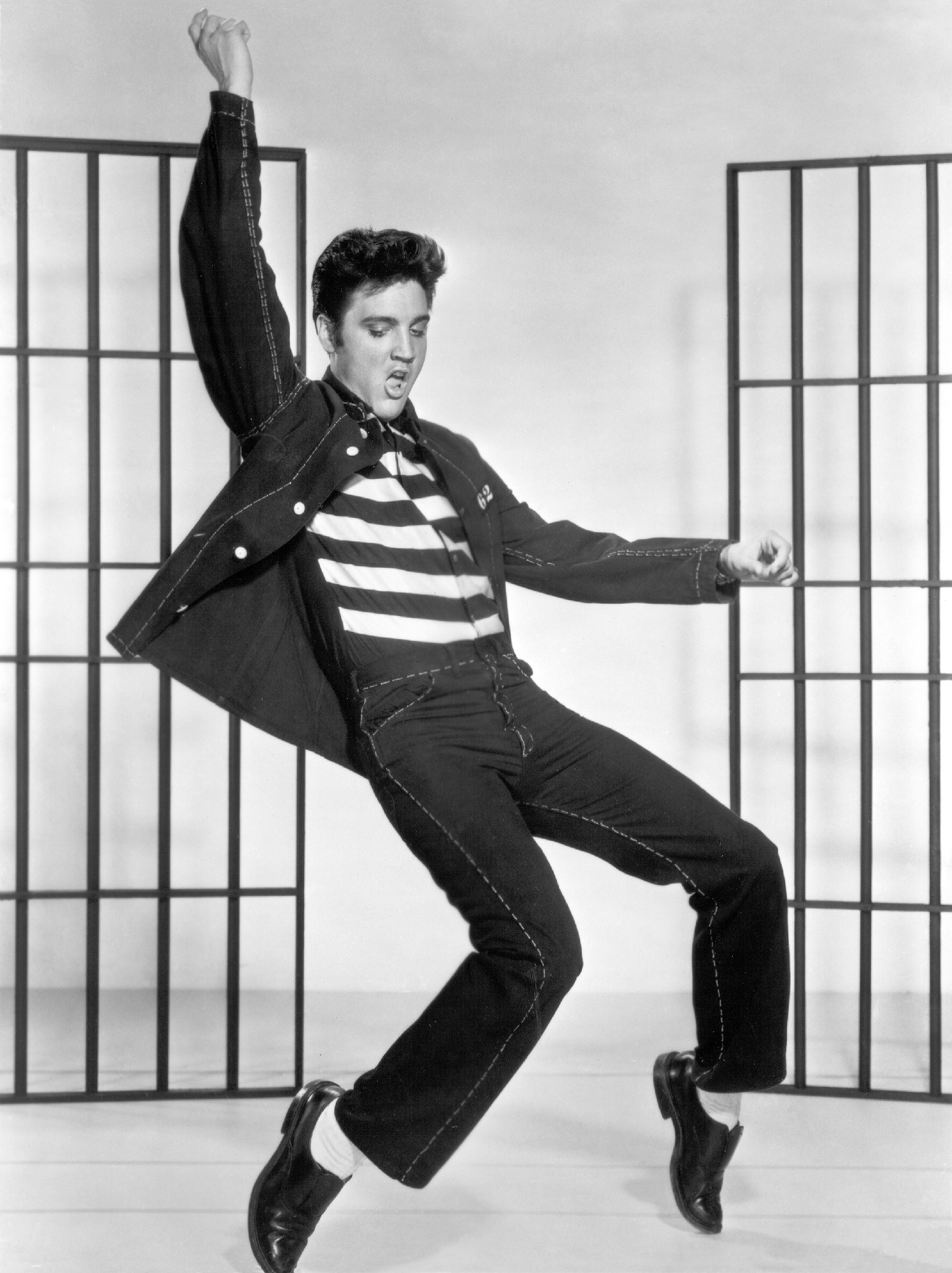 Merle Haggard, outlaw country pioneer and singer of Life in Prison, a song about the consequences of violent crime.
Merle Haggard, outlaw country pioneer and singer of Life in Prison, a song about the consequences of violent crime.
Merle Haggard, a foundational figure in outlaw country music, filled his 1967 album I’m a Lonesome Fugitive with songs exploring themes of crime and punishment. “Life in Prison” stands out as a stark narrative about a man sentenced to life imprisonment for killing his wife in a fit of rage. The song delves into the irreversible consequences of violent actions and the despair of a life sentence. “Life in Prison” gained further recognition when The Byrds famously covered it for their album Sweetheart of the Rodeo, bringing Haggard’s somber tale to a wider audience and solidifying its place as a classic country song about imprisonment and regret.
Louvin Brothers, “Knoxville Girl”
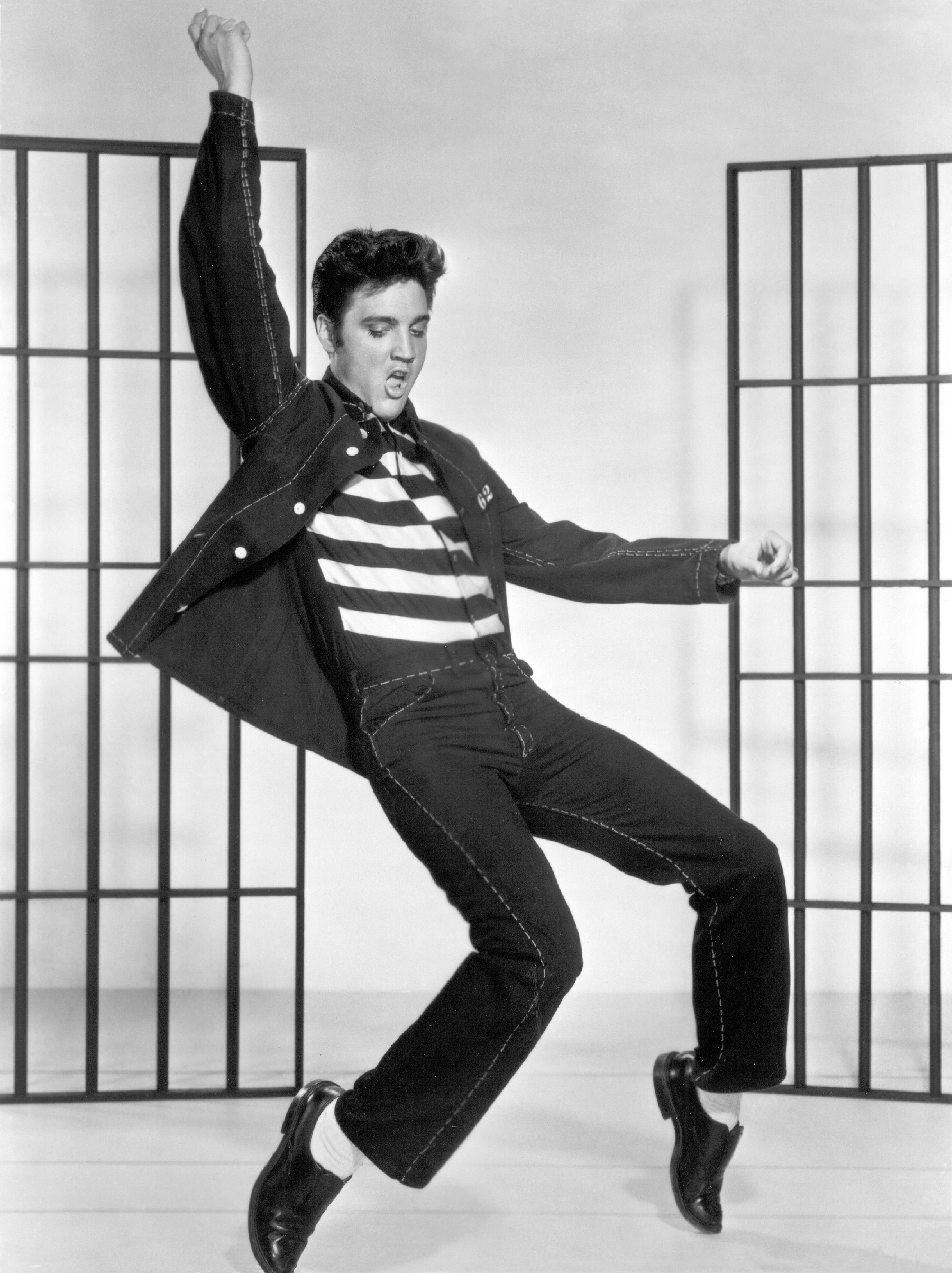 The Louvin Brothers, known for Knoxville Girl, a chilling Appalachian murder ballad ending in imprisonment.
The Louvin Brothers, known for Knoxville Girl, a chilling Appalachian murder ballad ending in imprisonment.
“Knoxville Girl” by the Louvin Brothers is a chilling and unsettling example of a traditional Appalachian murder ballad. Despite the angelic harmonies of the brother duo, the song unfolds a dark and disturbing tale. It begins innocently, with a chance encounter between a man and a girl in Knoxville. However, the narrative quickly descends into violence in the second verse: the man brutally murders the girl, disposes of her body in the river, and returns home with blood-stained clothes. His crime is revealed through a nightmare, leading to his capture by townspeople and a life sentence in prison. The song’s disturbing narrative, especially considering its release in 1956, highlights the dark undercurrents present even within seemingly traditional and wholesome musical forms, offering a stark and unforgettable depiction of crime and punishment.
Conclusion: The Enduring Appeal of Prison Songs
Songs about imprisonment, as this list demonstrates, are far more than just tales of woe from behind bars. They are reflections on freedom, justice, confinement – both literal and metaphorical – and the human condition itself. From rock and roll anthems to poignant country ballads and socially conscious hip-hop, the theme of imprisonment resonates across genres and generations. These 20 songs offer a powerful and diverse soundtrack for exploring the complexities of captivity, reminding us of the value of liberty and the stories that emerge from the shadows of confinement. Explore these songs and delve deeper into the rich and often unsettling world of music inspired by imprisonment.


